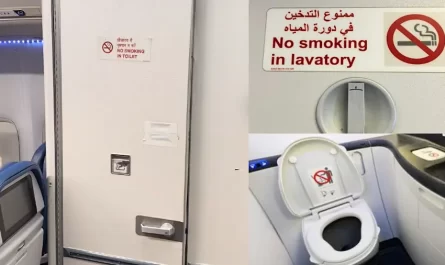Navigating the Turbulence: The Complexities of Flying with Magnets
Contents
In the world of air travel, safety reigns supreme, guiding regulations and restrictions that passengers must adhere to. Among these rules, the limitations on flying with magnets stand out as a curious case, often sparking questions and wonder. Magnets, those marvels of physics that fascinate both young and old, are subject to strict guidelines when it comes to air transport. But what makes magnets so special, and why are there restrictions on flying with them? Let’s delve into the magnetic mystery and uncover the reasons behind these regulations.
The Magnetic Influence on Aviation Safety
Magnets are not just simple toys or tools; they are sources of magnetic fields, capable of influencing their surroundings in profound ways. When it comes to aviation, the primary concern with carrying magnets onboard is their potential to interfere with navigational and communication systems. Airplanes are equipped with a variety of sensitive instruments that rely on magnetic fields for direction and data transmission. A strong magnet, if brought aboard, could potentially disrupt these systems, leading to incorrect readings and compromising the safety of the flight.
In air transport, a package or magnet is prohibited from flying if its magnetic field exceeds 0.00525 gauss at a distance of 4.5 meters (15 feet) from any point on its surface. Conversely, if the magnetic field is below this threshold at the specified distance, it is permissible for transport in either checked luggage or carry-on.
International Regulations on Magnets
Recognizing the potential risks, international aviation bodies have established guidelines to govern the transport of magnets on airplanes. The International Air Transport Association (IATA) has outlined specific regulations detailing how magnets must be packed and the maximum magnetic strength permitted for air transport. These rules ensure that any magnetic field generated by an item in cargo or carry-on luggage does not exceed the limits that could affect aircraft instruments.
Packing and Shipping Magnets Safely
For those who need to transport magnets by air, compliance with these regulations is paramount. Magnets must be properly shielded and packed to minimize their magnetic field. This often involves using specialized packaging materials that can contain the magnetic field within a safe radius. Additionally, shipping magnets as cargo rather than carrying them as personal items is generally advised, as cargo compartments often have additional safeguards against magnetic interference.
Exceptions and Practical Advice
While personal use magnets, such as those in electronic devices, headphones, and speakers, are typically allowed on board due to their weak magnetic fields, stronger industrial magnets require special attention. Travelers are advised to consult with their airline and possibly seek the assistance of a professional shipping company familiar with handling and transporting magnets safely according to aviation standards.
Can I take magnets in hand luggage?
Carrying a small magnet in your hand luggage during a flight is typically permissible. Magnets are not usually listed as a banned item for carry-on baggage. However, verifying with your airline and understanding the airport’s security protocols is recommended to guarantee adherence to all regulations.
Can you take magnets through TSA?
Yes, you can take magnets through TSA checkpoints, but with considerations. Small magnets, like those found in electronic devices, jewelry, or toys, are typically allowed in both carry-on and checked luggage without issue. However, stronger magnets might be subject to additional scrutiny or restrictions due to their potential to interfere with aircraft instruments. The TSA advises passengers to pack such items in checked baggage and may require individual inspection. For specific concerns or unusually strong magnets, it’s best to consult the TSA or your airline before traveling to ensure compliance with safety guidelines.
How to Ship Magnets by Air
To ship magnets by air, the following criteria must be met:
The magnetic flux of any package containing magnets should not exceed 0.00525 gauss at a distance of 15 feet from the package. Improper packaging of magnets for air transport classifies them as “dangerous goods,” necessitating adherence to the International Air Transport Association’s (IATA) Dangerous Goods Regulations (DGR). Effective packaging of magnetic materials for air transport must take these standards into account. Strong magnetic items must be adequately shielded to ensure their magnetic fields are within the acceptable limits for air shipment. It’s advisable to check with your carrier for detailed information and specific guidelines.
The Bottom Line
The restrictions on flying with magnets stem from a place of caution, aiming to preserve the integrity of crucial aircraft systems and ensure the safety of all passengers and crew members. As we continue to navigate the skies, understanding and respecting these guidelines is a small but significant way to contribute to a safe and smooth journey for everyone involved. So the next time you pack for a flight and consider bringing a magnet along, remember the invisible forces at play and choose to comply with the rules designed to keep us all safe in the air.
Are children’s toy guns allowed on a flight?
Can you take an inflatable paddleboard on a plane?
Can you take a hoverboard on an Plane?
Traveling with Golf Clubs by plane
Why can’t we fly with magnets?
Baggage Rules
Can I carry nail clippers on a plane?
What makeup items are not allowed on planes?
Are shaving razors allowed on plane?
Can you take shampoo and deodorant on a plane?
Flying with Musical Instruments
Checked Luggage Restrictions



